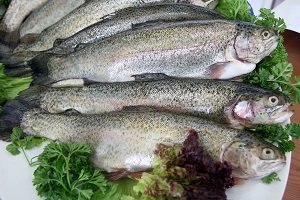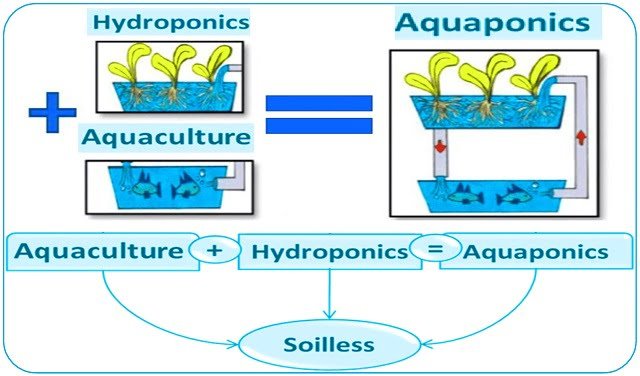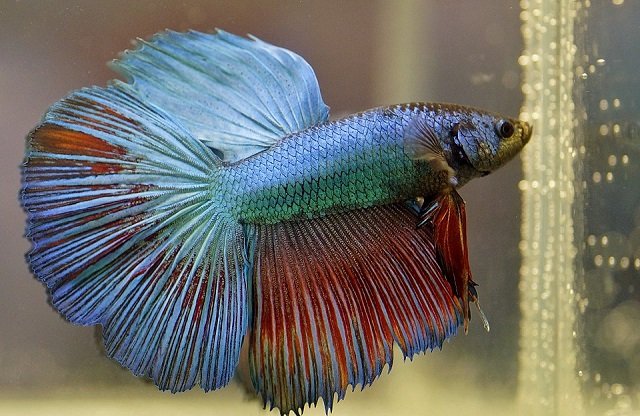
One of the main challenges in the aquaculture industry is to provide sufficient omega-3 fatty acids—crucial for both fish health and human nutrition—in a sustainable and cost-effective manner. Traditional sources of these vital nutrients, primarily fish oil, are becoming increasingly scarce and expensive. This has led to a growing reliance on plant-based oils in fish feeds.
While plant-based oils offer a viable alternative for energy, they lack the essential omega-3 fatty acids—eicosapentaenoic acid (EPA) and docosahexaenoic acid (DHA)—that fish and, ultimately, consumers need.
A study published by researchers from ARS-USDA, the University of California, the University of Idaho, and the Columbia River Intertribal Fish Commission explored the genetic mechanisms behind EPA and DHA production in rainbow trout, offering promising pathways to enhance their natural ability to convert plant-derived omega-3s into these valuable compounds.
The Omega-3 puzzle: balancing sustainability and nutrition
Fish oil, the primary source of EPA and DHA in aquaculture feeds, is a finite resource. According to an FAO (2022) report, more than 65% of global fishmeal production and 75% of fish oil production are used in aquaculture.
Plant-based oils, rich in alpha-linolenic acid (ALA), offer a potential solution. Fish can convert ALA into EPA and DHA, but their natural conversion rate is limited. This limitation results in farmed fish having significantly lower levels of EPA and DHA compared to their wild counterparts, affecting their nutritional value for human consumption.
A genetic approach to enhancing Omega-3 production
Recent research has focused on identifying genetic factors that influence EPA and DHA production in rainbow trout. The study, published in Aquaculture Reports, involved three generations of selectively bred trout families and investigated the physiological mechanisms responsible for converting plant-based lipids into omega-3 fatty acids (specifically EPA and DHA) and storing them in muscle tissue.
Researchers examined 450 fish from 30 families and identified individuals with distinct levels of EPA and DHA in their muscle tissue. These fish were then classified into low, average, and high-performance groups based on their EPA and DHA levels. The high-performance group exhibited significantly higher muscle fatty acid proportions of EPA + DHA (8.86%) compared to the average (6.33%) and low-performance (4.84%) groups.
Deciphering the mechanisms: transcriptomics and proteomics
To understand the underlying biological processes responsible for these differences, researchers employed advanced techniques called transcriptomics and proteomics.
Stay Always Informed
Join our communities to instantly receive the most important news, reports, and analysis from the aquaculture industry.
- Transcriptomics analyzes the complete set of RNA molecules in a cell or tissue, providing insights into gene expression.
- Proteomics studies the complete set of proteins, revealing the functional components of cells.
By analyzing muscle and liver tissue from the three performance groups, researchers aimed to identify genes and proteins that were differentially expressed in high-performing fish, indicating their possible role in EPA and DHA production and storage.
Key findings and future directions
Although researchers did not find direct links between genes or proteins in muscle tissue and lipid synthesis/deposition, the liver emerged as a more promising area of study. While some genes associated with lipid synthesis were detected, no protein directly linked to lipid processing was significantly upregulated in the high-performance group across all comparisons.
Interestingly, the study found that levels of fatty acid-binding proteins (FABPs) varied significantly and consistently among the treatment groups. This suggests that FABPs could serve as valuable markers for genetic improvement of lipid bioconversion and storage in rainbow trout.
Implications for rainbow trout aquaculture
Reducing Fish Oil Use
The study demonstrates that it is possible to reduce or completely replace fish oil in rainbow trout feeds with plant-based oils without substantially affecting fish growth or health. This is crucial because fish oil is a limited and costly resource.
Genetic Selection for Improved Bioconversion
There is variation in rainbow trout’s ability to bioconvert alpha-linolenic acid (ALA) from plant-based oils into the omega-3 fatty acids EPA and DHA. Genetic selection has the potential to produce trout with a higher conversion capacity, helping maintain these essential fatty acids in fish fed plant-based diets.
Managing Fatty Acid Composition
Replacing fish oil with plant-based oils changes the fatty acid composition in fish, reducing EPA and DHA levels. While finishing diets with fish oil can partially restore these levels, full recovery is not achieved. Therefore, it is important to consider strategies to maintain adequate omega-3 levels in fish, such as genetic selection, DHA-rich algae supplementation, or genetically modifying plants to express higher levels of EPA and DHA.
Gut Health
The trout selected in this study appeared to have adapted well to metabolically handle soybean meal-based diets without developing enteritis. This suggests that genetic selection may also improve gut health in fish fed plant-based diets.
Interest in Sustainability
Due to the rising cost and decreasing availability of fish oil, researchers and aquaculture producers are highly interested in fish’s ability to convert and deposit long-chain n-3 polyunsaturated fatty acids and the heritability of this trait.
Conclusion
The study’s findings represent a crucial step toward developing sustainable aquaculture practices. By identifying genetic markers associated with enhanced omega-3 production, breeders can select and cultivate fish with a greater ability to convert plant-based ALA into EPA and DHA. This could result in farmed fish with nutritional profiles closer to those of wild fish, ensuring a healthy and sustainable source of omega-3 fatty acids for consumers.
Further research is needed to fully unravel the complex interplay of genes and proteins involved in omega-3 biosynthesis in rainbow trout. However, the insights gained from this study provide a strong foundation for future efforts to improve EPA and DHA production efficiency in farmed fish, paving the way for a more sustainable and nutritious aquaculture industry.
Contact
Ken Overturf
ARS-USDA, Hagerman Fish Culture Experiment Station 3059-F National Fish Hatchery Road
Hagerman, ID 83332, USA
Email: Ken.Overturf@usda.gov
Reference (open access)
Overturf, K., Abernathy, J., Kültz, D., Bledsoe, J., Narum, S., & Welker, T. (2025). Potential physiological mechanisms behind variation in rainbow trout (Oncorhynchus mykiss) to biosynthesize EPA and DHA when reared on plant oil replacement feeds. Aquaculture Reports, 41, 102655. https://doi.org/10.1016/j.aqrep.2025.102655
Editor at the digital magazine AquaHoy. He holds a degree in Aquaculture Biology from the National University of Santa (UNS) and a Master’s degree in Science and Innovation Management from the Polytechnic University of Valencia, with postgraduate diplomas in Business Innovation and Innovation Management. He possesses extensive experience in the aquaculture and fisheries sector, having led the Fisheries Innovation Unit of the National Program for Innovation in Fisheries and Aquaculture (PNIPA). He has served as a senior consultant in technology watch, an innovation project formulator and advisor, and a lecturer at UNS. He is a member of the Peruvian College of Biologists and was recognized by the World Aquaculture Society (WAS) in 2016 for his contribution to aquaculture.




